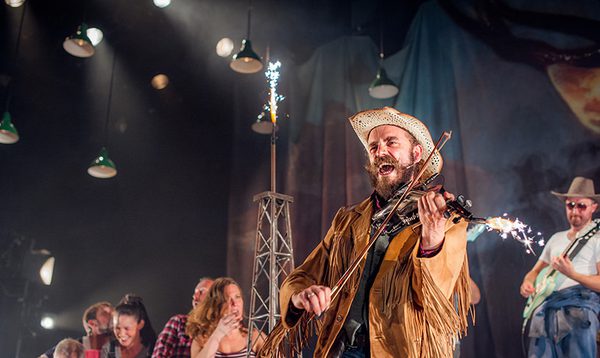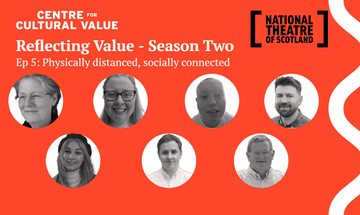The Enduring Appeal of The Cheviot, The Stag and The Black, Black Oil by Joe Blythe
Latest24 May 2019
News Story
Few plays in Scotland can boast a reputation as exalted as that of The Cheviot, The Stag and the Black, Black Oil. Famously described by The Scotsman as “arguably the single most important show in the whole history of Scottish theatre”, John McGrath’s totemic political play became an inspirational theatrical milestone for a generation of people. Now embarking on a new tour taking in some of the locations first visited by the production on its debut in 1973, the hope is that it has lost none of its fiery political relevance.
The Cheviot was the first show from the 7:84 Scotland company. McGrath took his initial inspiration for the play from the ongoing oil boom of the early 1970s, which saw vast fields of crude discovered deep within the North Sea. Almost immediately, the discovery was snapped up by various American concerns, and the effects of the boom were keenly felt in communities across the North East. Rents skyrocketed, and communities were transformed.
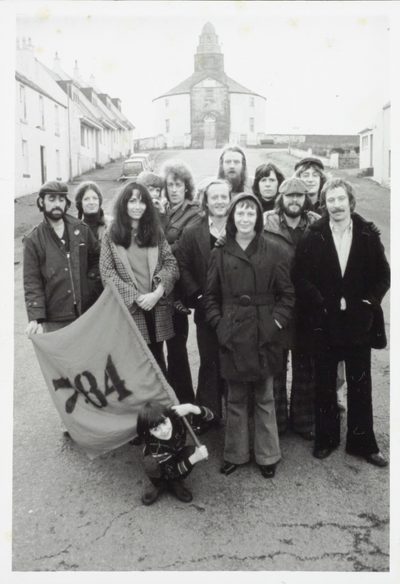
The 7:84 Company in Bowmore, Islay in 1973
Credit: Barry JonesThe avowedly-socialist McGrath used this as an entry point to explore the history of class struggle and land exploitation within Scotland, and the scars left as a result of the trauma. Starting with the Highland Clearances of the mid-18th Century, which saw the native tenants across the Highlands brutally cleared from their holdings and land to make way for the obedient, and far more profitable, herds of Cheviot sheep, the play takes in Victorian tourism and the ongoing use of land for upper-class hunting parties, before landing back at the discovery of the Black Black Oil.
Despite the heavy subject matter the play was as far from anything you would have found on the country’s gilded main stages, preferring instead to reach its audience through a much more accessible form. Borrowing from the best of Scottish variety tradition, the play was presented as a freewheeling ceilidh performance, with live music and songs sitting alongside comic skits, Gaelic laments, historical storytelling, and drama. Audiences had never seen anything quite like it.
By the end of its inaugural tour in the Spring of 1973, which covered much of the Highlands and Islands, The Cheviot had already achieved legendary status. A Guardian feature, published as the play was midway through its follow-up tour later in the year, noted the sensational audience demand wherever it played: A date at Glasgow’s Citizens Theatre saw “the management throw open the disused upper gallery rather than turn people away” while the performance in Achiltibue, Ross-shire “had some of the local fishermen so hooked that they drove to Ullapool the next night, over miles of narrow, winding precipitous road, for a second helping.”
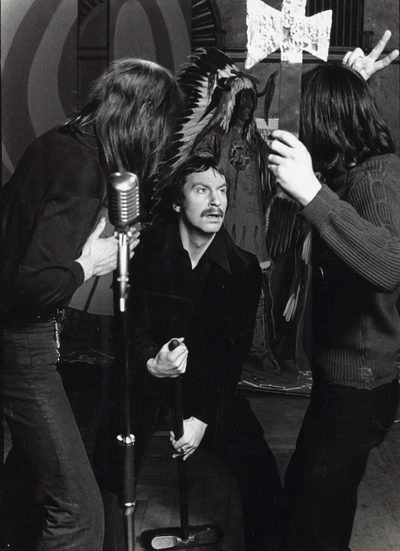
Bill Paterson (centre) in the 1973 production
Credit: Barry JonesThat’s not to say there weren’t bumps along the way. When the show came to Edinburgh later that year some reviewers noted that the mix of fiery polemic and satirical energy fell flat in the face of the kind of upper classes that the play was supposedly railing against. Spare a thought for original cast member Bill Paterson who, when faced with a limp response from a packed but subdued Lyceum audience, is said to have lamented from the stage “We got more out of a dozen people in Fraserburgh!”
Where possible the performances would culminate in a full and boisterous ceilidh, where the company would transform themselves into a dance band under the truly excellent moniker The Force Ten Gaels. There, the audience would mingle with the performers and each other, and impassioned discussions of the issues raised by the show would begin, often continuing long into the night. It was a uniquely active approach to political theatre, both entertaining and empowering, that endeared it to the communities it visited. As the same Guardian report notes: “Few theatrical tours in Scotland can have penetrated the country so thoroughly or connected so completely with audiences of all ages and types.”
By the end of 1973, in what came to be hailed as “The Year of The Cheviot”, the show had performed over a hundred times to tens of thousands of people. Its reputation was enhanced even further when it received a television broadcast as part of the celebrated Play for Today series on BBC 1, which brought the show directly into the homes of a hugely expanded new audience. However widely it had toured this was an invaluable way of cementing the show’s impact, allowing it to reach the type of audience who might have been sceptical of live performance, but who nevertheless could come away galvanised by the show’s radical call to action.
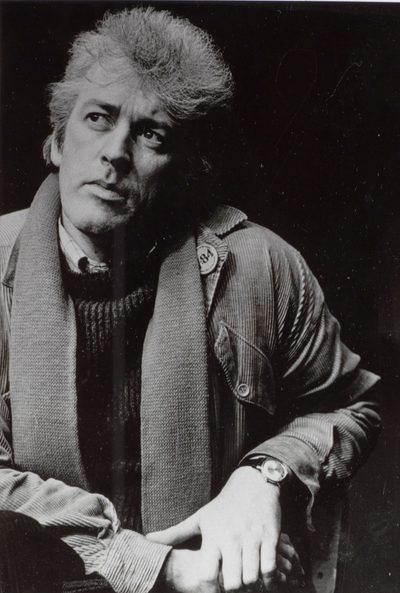
John McGrath
Credit: Barry JonesOne of the secrets of the show’s rapport with audiences was that the play that was not merely live, but also uniquely alive in a way that most theatre shows weren’t. Throughout the original tour McGrath would rework the script based on experiences and conversations he had with people along the way, adding in extra lines, jokes, or asides from place-to-place, meaning that the show might be slightly different depending on where you saw it. The audience were made to feel that The Cheviot truly was telling their stories, echoing the concerns and political issues that mattered to them.
Of these, the key political target at the heart of the play was, and remains, land ownership and the wealth it generates. In true 7:84 style this even extended to the show’s original programme, which included a run-down of the country’s largest individual land holders (even in 1973 consisting almost exclusively of various Dukes, Earls, and Lords), and was bookended by the piercing proclamation “THE PEOPLE DO NOT OWN THE LAND. THE PEOPLE DO NOT CONTROL THE LAND ANY MORE THAN THEY DID BEFORE THE COMING OF THE GREAT SHEEP”.
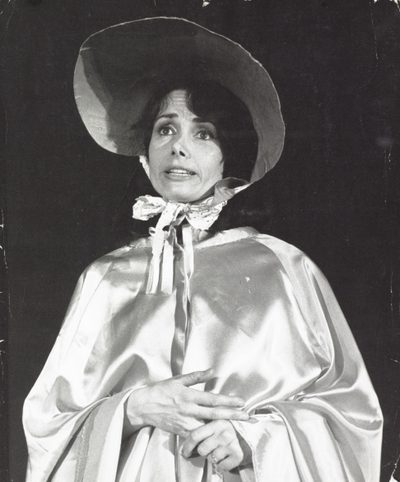
Elzabeth MacLennan as Harried Beecher Stowe in the 1973 production
Credit: Barry JonesThe class struggle The Cheviot portrays, the disconnect between who creates the wealth, who owns it, and who benefits from it, is inexorably tied up in the issue of land. And although The Cheviot deals almost exclusively with the story of the Highlands and Islands, the injustices it portrays and the acts of resistance that followed, resonated across Scotland.
In his 2010 book The Poor Had No Lawyers, which deals with the country’s history of land exploitation and ownership, Green MSP and land reform campaigner Andy Whiteman writes “Whilst for good historical reasons land issues have become associated with the Highlands and Islands, almost to the exclusion of the rest of the country, the historic struggle for land rights took place across the whole country. The womenfolk in Eyemouth defending their ancient rights, the tenant farmers in East Lothian evicted because they voted for the wrong party, and the community activist in Easterhouse fighting for better housing are all part of the land reform struggle – a struggle to reform, to change, the legal and economic framework that today still constrains too many people from realising their potential.”
Even though the political structure of the country has changed immeasurably since The Cheviot’s first tour, this core issue of land ownership remains incredibly resonant, perhaps most keenly in the eyes of the younger generation. McGrath noted that he was inspired to write the play after seeing the economic impact of the oil boom on ordinary people; of land bought out from under farmers, an insecure and exploitative job market, and young couples forced to emigrate in the search of an affordable home. You’d be hard-pressed to find anyone under the age of 35 today who’d argue that things are any better for their generation.
This sense of injustice has arguably fuelled new levels of political anger and dissatisfaction. Whiteman again notes: “If everyone were living happily, there would be no land problem. But they are not- young people can’t afford houses, tenant farmers are being harassed, communities are losing common land, and Scotland is still a country where a tiny few hold sway over vast swathes of the country”
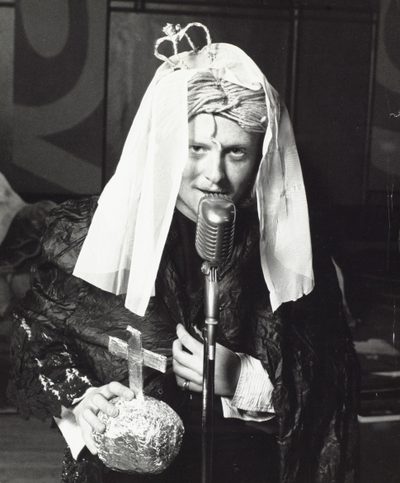
Chris Martin as Queen Victoria in the 1973 production
Credit: Barry JonesBut there have been seeds of hope. In recent years land ownership has shot up to the top of the Scottish political agenda through the passing of the Community Empowerment Act of 2015 and Land Reform Act 2016. There have been high-profile community buy-outs of islands such as Gigha and Eigg, while groups and trusts in towns and cities across the country have taken control of local assets through acts of protest, occupation, and collective action. Slowly but surely communities are feeling empowered to make their voices heard.
By drawing parallels between historical injustices and the modern day issue of oil, The Cheviot was always designed to inspire its audience to action. Joe Douglas, Director of the revival, hopes the play can still provide a call-to-arms across many more recent political issues. “Obviously when this play first went out 45 years ago that (the oil boom) was very current and now that aspect is also sort of historical. Now in the 21st century, looking at schoolkids going on strike and climate change becoming an actual recognised problem, a play like this in a very gentle way begins to kind of open that question as well, because we need to change the way we’re living.”
To consider whether any elements of The Cheviot might need updating to reflect the 45 years since it was first written, Douglas worked closely with the McGrath family, including John’s daughter Kate McGrath, on revisiting the text. However little needed to be done: despite all that has happened in the years since, they found a play as resonant and relevant in 2019 as it had been in 1973. From the current climate emergency and Scotland’s emergence as a potential renewable energy powerhouse, to a new ruling class made up of international elites and shadowy offshore funds, the times may change, but the problems remain the same.
The Cheviot still opens with the assurance that it is “a story with a beginning, a middle, but as yet no end”. In McGrath’s eyes it was a challenge to the audience that they had the power to take control of their own destinies. The reminder is driven home at the play’s close, with the reading of a poem from crofter Mary MacPherson, written in the 1890s, whose family had been cleared from Skye.
Remember that you are a people and fight for your rights
There are riches under the hill where you grew up
There is iron and coal there, grey lead and gold there
There is richness in the land under your feet
Remember your hardships and keep up your struggle
The wheel will turn for you
By the strength of your hands and hardness of your fists
Your cattle will be on the plains
Everybody in the land will have a place
And the exploiter will be driven out
It is a message that resonates just as strongly today as it did in 1890, in 1973, or in all the years since: that it should always be the people who get to write the end of their story.
About the author
Joe Blythe
Joe Blythe is an experienced PR and communications professional who is currently the Media Officer with National Theatre of Scotland. He has previously worked with a number of leading Scottish cultural festivals and organisations, including the Glasgow Film Festival, The Arches, the Edinburgh Mela, Take One Action Film Festival, and as a freelance journalist.
